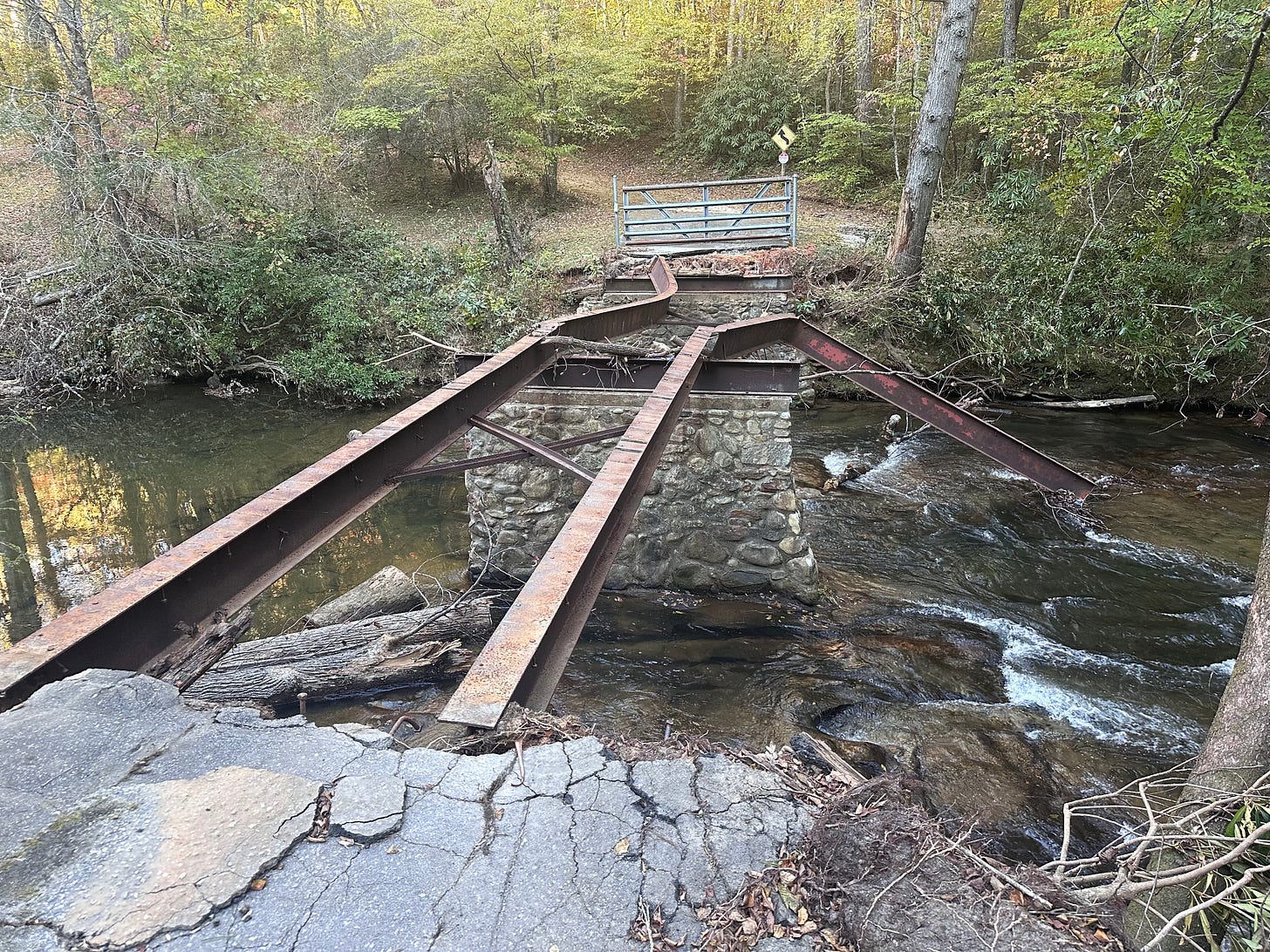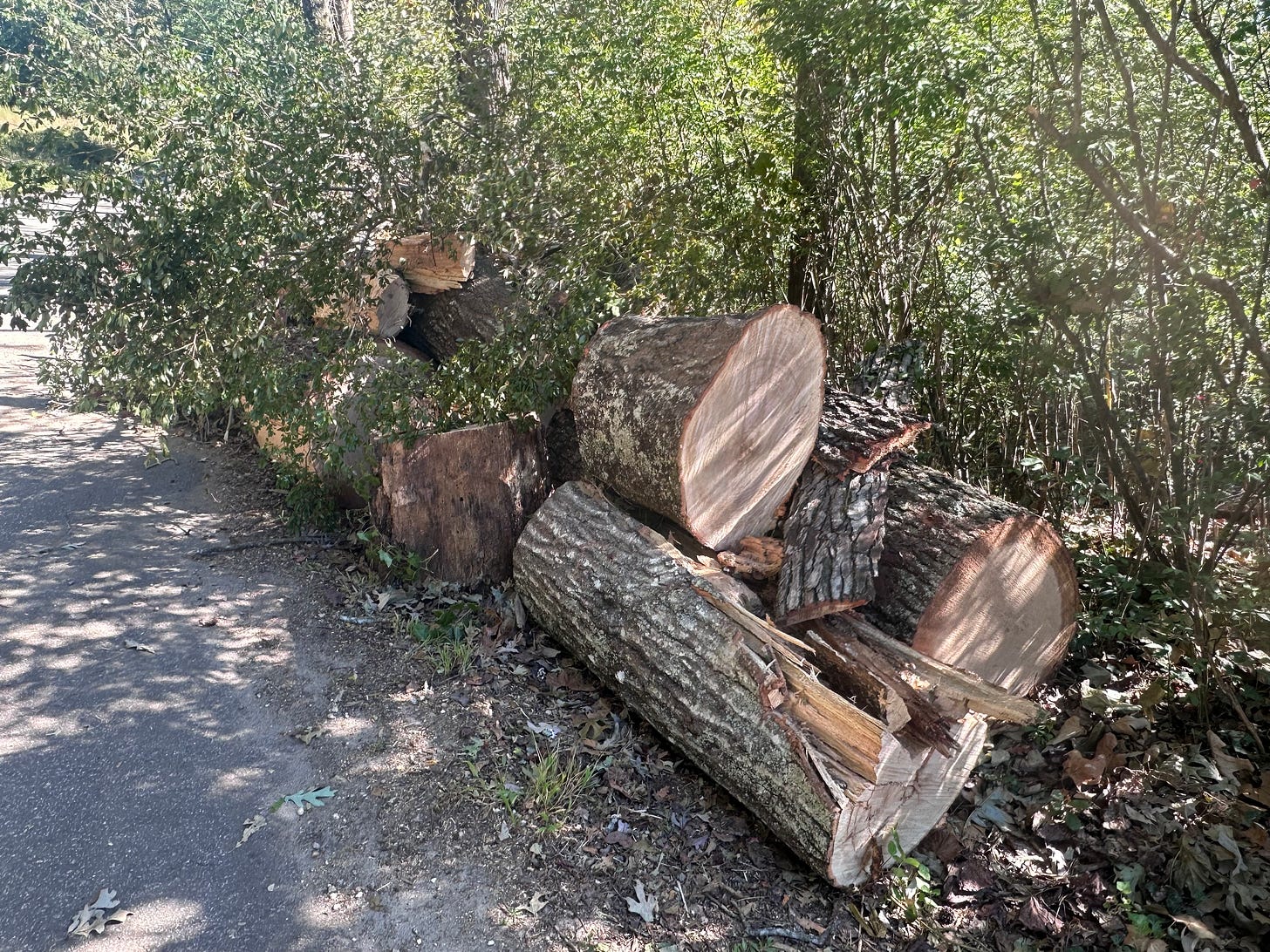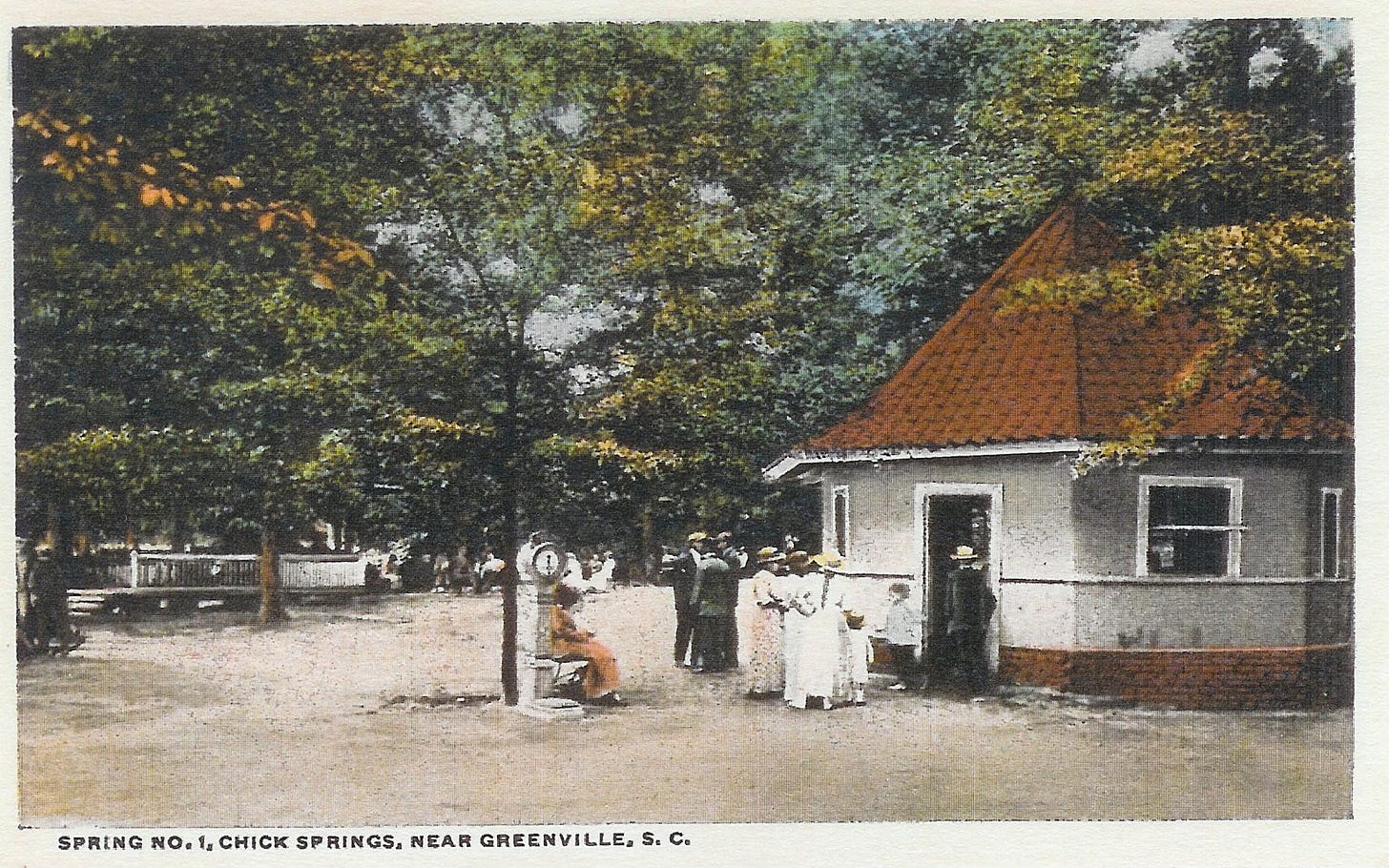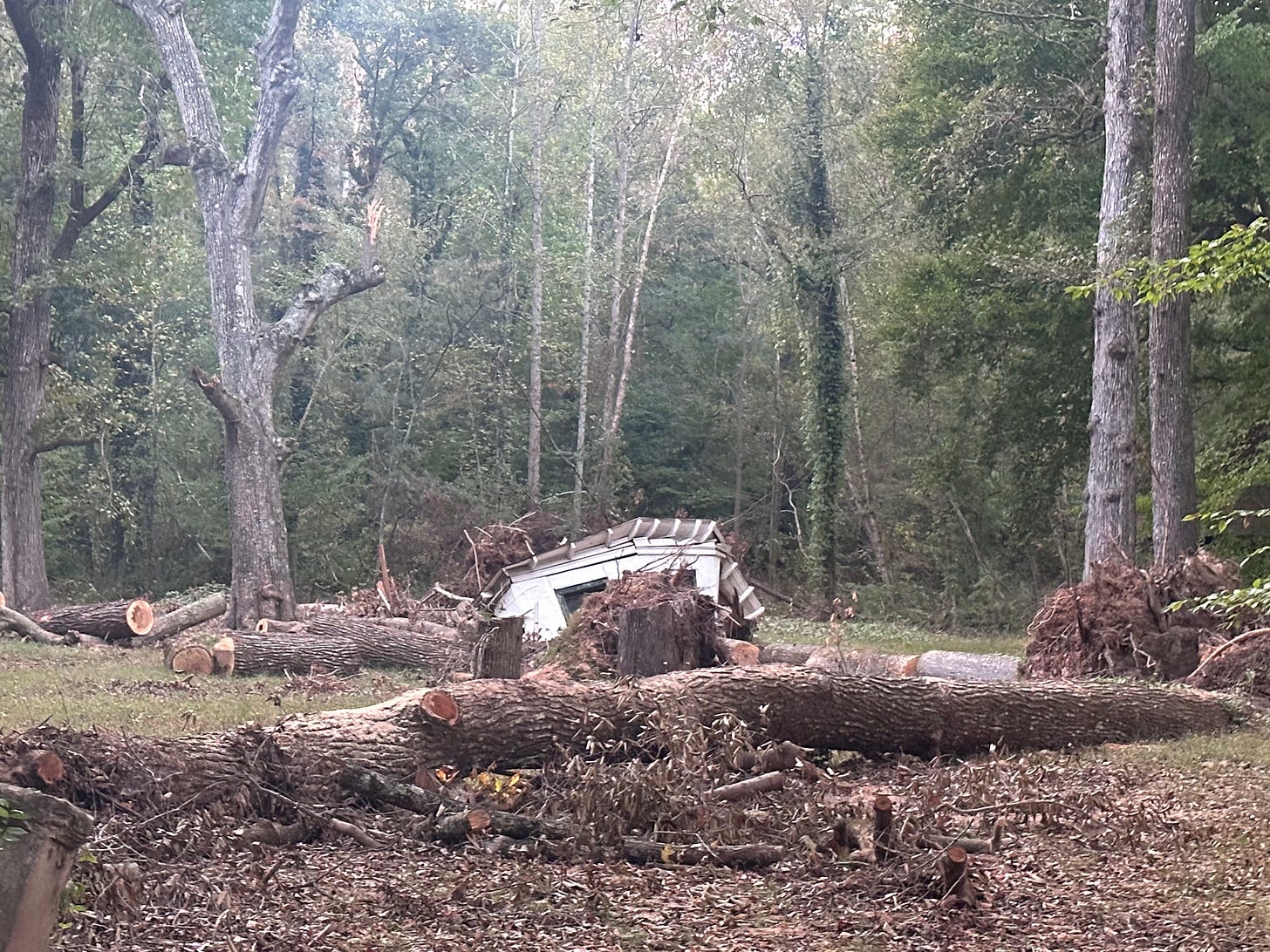Goldenseal
As a kid, I’d scour the woods with my cousin Janette looking for yellow root. This plant is older than most of our stories and grows in sandy soil along riverbanks and creek moss. Janette shaved pieces of the root with her knife and handed the slivers to me with her plant-hungry thumbs while giving me instructions to chew so that the yellow juice could heal the parts of me that were invisible to modern medicine.
Prized as a tonic to the point of near extinction, yellow root, or Goldenseal, still grows throughout the waterways of the Appalachians. And like its endangered cousin, Solomon’s Seal, the plants source their common names from the wise veracity of the Old Testament king.
The secret is in the woody rhizomes of these plants. The plants die back in winter, and as spring arrives, one or more new shoots emerge from the rhizome. If you carefully dig up the rhizome, brush away the dirt, and slice off a section, you will see what could be called an image of King Solomon’s Seal at the site of the cut.
You can, then, replant a section of the rhizome, though it will take from 3 – 5 years for it to grow to maturity.
Notes on Yellow Root or Goldenseal by Katherine Schlosser from the Herb Society of America.
Like these plants, we’re living in a time of near extinction and renewal in the southeastern mountains of the United States. Rebirth isn’t a speed sport. It’s achingly slow and filled with setbacks that would stop most people in their tracks on a clear road, but the people of Appalachia are retaking root on a plot of thick, flood-drenched mud and waste.
Like the Goldenseal our grandmothers harvested, there is medicine in their roots. The Appalachian mountains are this country’s apothecary, a repository of wisdom passed down through generations and hidden in the cool forest shadows beside the ginseng and sacred springs. The French Broad River is one of the oldest in the world and she was raging on the morning of September 27th.
The mountains need your help. Here is a continually updated list of trusted, vetted organizations and individuals who are working tirelessly to see that the region has the funds it needs to clean up and the tools it needs to rebuild. Bookmark it. Check back often. Share the list with people outside our area who want to help but don’t know how.
But more than anything, keep talking about the aftermath of Hurricane Helene. Public interest is fading now that the immediacy of the disaster has passed, but rebuilding hasn’t even begun. People are still busy clearing out debris and allowing their shock to give way to grief.
In the words of Tamar Reno, an indigenous powerhouse of wisdom who daily bears witness to the aftermath of the storm from her Bear Creek farm in North Carolina, “...if you're trying to figure out what that smell is coming in on the breeze, it's Appalachian heartbreak.”
Path
by
from 14 Flashes From the HurricaneThe baby lay on the bed between Raven and me. She was two months old and this was her second hurricane. I asked Raven again about the storm’s path. He had checked the weather just before bed. The last he’d seen, he told me, speaking through the howling dark, the hurricane would come ashore around Perry and travel up I-75 toward Atlanta, two hours west. I thought of my friends in other parts. How fast is the storm moving? I asked Raven. About 30 miles an hour, he said. Then it will be past us soon, I said.
I had a strange feeling, however. People are dying right now.
Maybe not, he said. But you know how quickly a path can change.

You can have all the wisdom in the world, but if you’re stingy with it, what good are you?
- Tamar Reno (yet again, I could quote her all day — and usually do)
These mountains call to writers
This is where F. Scott Fitzgerald drank and wrote stories and womanized in the Grove Park Inn while his wife Zelda received psychiatric treatment in Asheville. This is where Thomas Wolfe grew up and wrote Look Homeward Angel. This is where O. Henry is buried (near Wolfe in Asheville’s Riverside Cemetery). This is where Carl Sanberg wrote his poems. This is where Charles Frazier grew up and wrote Cold Mountain. This is where Patricia Cornwell wrote murder mysteries. This is where Ron Rash brought it all into the modern age as Americana went mainstream.
This is where I grew up writing. It’s where I write still.
So, if we don’t get some people picking up their notebooks and having at it, if we don’t have some great writing or fair reporting coming out of this region after the devastation of Hurricane Helene —I’m going to be pissed.
The news cycles have already forgotten us — it’s tough covering natural disasters in the middle of a presidential election. 60 Minutes did a feature, but exposure is mostly crumbs. We need writers to pick up their notebooks and have at it. Tell me what you’re seeing. Send it out into the world. As Eudora Welty wrote of her stint as a WPA photographer in 1930’s Alabama, “Making pictures of people in all sorts of situations, I learned that every feeling waits upon its gesture; and I had to be prepared to recognize this moment when I saw it. These were things a story writer needed to know.”
I need my southern writers to unite and show us what they’re seeing.
Because until now all those lauded nature writers who taught me my craft and praised these mountains while telling me it was my job to pick up the pen and continue the tradition have been absolutely silent. Their rivers rose and tore the roads and bridges apart, but their hearts are so blinded by academic stoicism that they haven’t begun to use their words and their clout to tell the story of what has happened in these hills. I’ve been watching to see what they would do, and so far? Crickets.
These mountains have written your poems. These hills have coddled your cabins. These rivers have hosted your retreats.
The landscape is asking you to use your skills now for the greater good of every single hillbilly you’ve exploited for your character-building literary blueprint.
They’re asking you to write.
That writing won’t be pretty or polished or worthy of merit. It won’t be challenging or risqué or complete. But it will be necessary and raw and unfiltered. And the world needs that right now. It needs it so it doesn’t forget.
I’m doing what I can, but my reach is small. The washed-out rivers and the desolation of the mud-filled houses are asking you to take action.
Do it like no one’s watching — because they’re not.
Let’s change this.
from One Essay Could Change the Future in The Elysian by
It has always been writers who came up with ideas for our future, and it is still writing that inspires us to build them. No other medium is as powerful. No other medium asks that we sit quietly and pay attention. That we read and think. That we are moved to action.
Field Notes
from Mountain Time on Main Street, Burnsville, NC
The only thing that’s mixing well right now is the love between people.
The helpers are arriving clear headed and focused. We aren’t. They are leaving heart broken, with promises to return. I believe they will. We are falling in love with them, and the spirit of kindness they bring. They are falling in love with our mountains, our people and even our rivers.
Rivers kind of scare me right now. People don’t.
People are doing what good people do. We are so thankful for them.
From someone who wishes to remain anonymous:
I gotta say the whole thing freaked me out. I’m helpless while my people are suffering. My family’s house is covered in trees and there is a limb that came inside and the power box is ripped off the side of the house and a truck was crushed. The fire department said they have seen houses with less damage be condemned. People are so messed up from the experience, everyone trying to give advice. If the house or FEMA is mentioned, they just totally shut down. During the worst part of the storm someone was screaming and holding on to a door frame while the trees were falling on the house. Beetles had already been eating the wood on the roof. It feels like my whole childhood is slowly slipping away. I’m just glad everyone survived. I know I would have been in the basement. I doubt they will ever be the same after this.
Intermission
If you’re wanting a little palette cleanser, I was writing and posting my love story each week before I was married and Helene hit in late September. Ten Times I Said No To Love is a romance in a sarcastic, doubting, general sense, but it’s also a love story to the land, my farm, and the horses that made me. Chapter 8 is coming soon, but if you’re new to Stable Roots, you can catch up with all the previous chapters here:
|| Chapter One || Chapter Two || Chapter Three || Chapter Four || Chapter Five
|| Chapter Six || Chapter Seven ||
Chick Springs, Taylors, SC
Water is life — until it cuts through the gorges and gouges out new paths. We must drink water to live, but drinking too much will poison us. Any beneficial thing becomes its opposite in great volume.
Because water is so necessary for life we can trace the migration of civilizations, towns and cities, expansion and contraction, like a map written into the earth by landmarks of accessible, clean water.
Chick Springs in downtown Taylors, SC was one of those places. The waters were revered long before European settlers arrived. Robert Mills, architect of the Poinsett Bridge and two versions of the Washington Monument wrote in 1826 that the water of Chick Springs smelled, “like the washings of a gun barrel” and could be used in the “curing of ring worms and other cutaneous disorders. [This] beautiful spring bursts and boils up from the earth in a large stream . . . of so salubrious a nature that many persons visit them in the autumn for health.” 1
The gun-washing odor Mills references is a mixture of sulfur and iron, the mineral spring’s periodic table of sustenance, the earth’s tonic.
Everywhere I’ve wandered, I’ve found a sacred, healing spring: villages in rural Russia, ancient churches in Turkey, and the remains of Chick Springs, a short drive from the farm. Our land was most likely a part of the spring complex at some time, joined by the Enoree River before the area was developed.
Through the seismic growth and development of my city in the foothills of the Blue Ridge Mountains, a lot has been forgotten. Chick Springs was one of the first spots to be settled in this region and became a resort, a military academy, a sanatarium. The waters were bottled and sold. Fires destroyed two hotels and a flood consumed the spring when a faulty culvert gave way in heavy rains.
By the 21st century, the significance of the springs had faded from cultural memory, but its peaked-roof spring house and picnic gazebo remained untouched and visible from the street shrouded in a flat shrine of trees.
When Hurricane Helene blew through, the spring property had only just been purchased from a private owner, and plans for a park and restoration were in place by Taylors Town Square, a group of stewards with the ultimate goal of transferring ownership to Greenville County Parks and Recreation, eventually linking the historic property with the proposed Enoree River Trailway.
That’s more history than anyone outside my region would care to know. Now that we have some backstory, let me tell you what this property means to me.
I like the silence of forgotten places, the way once busy hubs seem to hold collective memories when they’ve fallen into disuse over time. An interesting structure over an ancient spring is like a church to me — a place of pilgrimage and remembrance.
When something that has stood the test of time falls, it jars me into the realization of how temporal our human endeavors really are. We know this, but we don’t know this until something big stamps its point into the landscape.
A few days after the storm we snaked our way through fallen trees and shuttered neighborhoods trying to reach Christopher’s house ringed in large oaks. We wanted to make sure the roof was still standing (it was). A road closure forced us to detour past Chick Springs and we stopped the car and stared at the crushed remains of the wooden spring house. A fallen tree leveled it. The old gazebo still stood in the background like a lucky, sheepish side character.
It didn’t matter — but it did. There was so much more to worry about — but this worried me. This one old, tiny building in a sea of fallen trees, its angled walls that had once housed people’s pain and healing and hope, a marker of nature’s forgotten memories, was like a tangible symbol of our constant, futile striving to control the elements. The way we build our humanness into a deceiving architecture of security.
The crushed spring house became my Pompeii.
So much else has been destroyed or permanently altered, but noticing the smashed building at Chick Springs broke open something I’d been holding back. It can be rebuilt and restored but it won’t be the same.
I guess it still is a metaphor, a tangible, memorial for our times. There is a before Helene and there is an after — a trickle of healing spring water and a flood that moves mountains.
The water in our bodies knows what our eyes take time to process. As we stretch into the lost art of adaptability and change, we’re given the gift of noticing — some of us for the very first time in our structured, insulated lives.
We are not the building.
We are the elements.
Love,
Kim
Robert Mills, Statistics of South Carolina (Charleston: Hilbert & Lloyd, 1826)







Please keep sharing. Thank you. Hopefully many blessings keep coming
“The water in our bodies knows what our eyes take time to process.” This hit home in so many ways for me. Helene has brought up difficult memories and I have so gratefully learned through your writing that it is finally ok to process in any form, shape or fashion. Thank you. 🖤